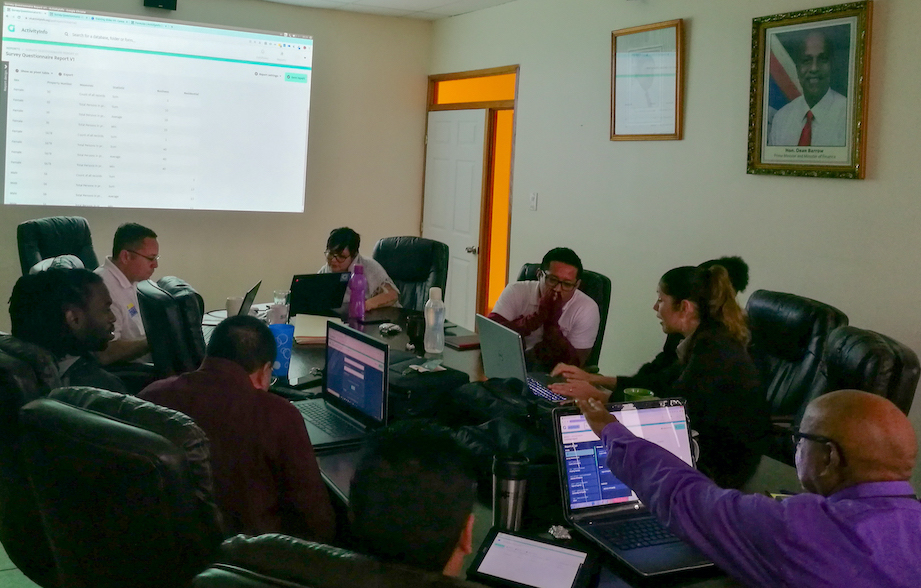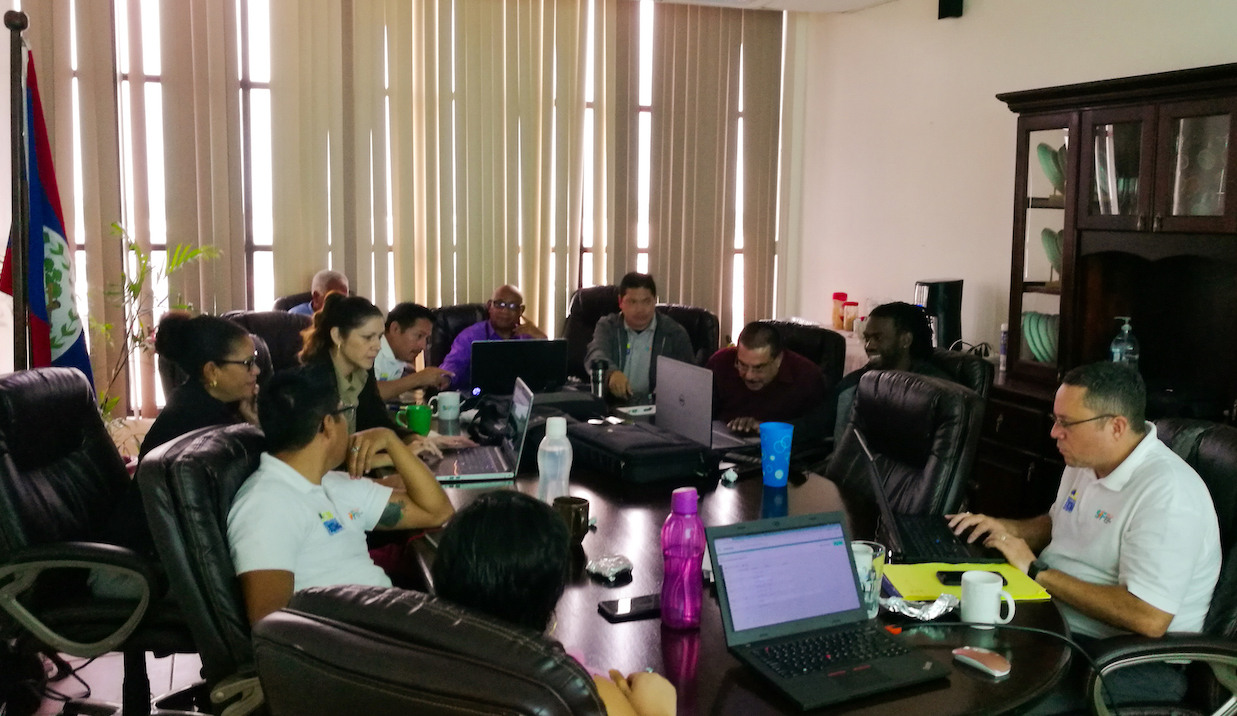Monitoring and evaluation for development programmes: 5 days with the Belize Social Investment Fund

This November, our Training Coordinator, Lucy Brinks, visited the offices of the Belize Social Investment Fund (BSIF) in Belmopan City for a five day customized training on ActivityInfo.
BSIF is an implementing agency of the Government of Belize, running development programmes throughout the country that aim to improve the quality of life of citizens via infrastructure and social programmes. The team of BSIF will be using ActivityInfo as a Monitoring and Evaluation platform for various projects and sub-projects.
During the five day training, people from different departments of the agency came together and discussed their Framework, Programmes and outputs and with Lucy's guidance, reflected on the ways to translate their tangible goals into an online information system in ActivityInfo.

By the end of the training, the team of BSIF had a working Database with multiple Folders, Forms and Subforms in place which reflected the hierarchies and objectives of their Programmes. At the same time, the Database setup took into consideration the different types of functions that people have within each projects as well as the activities and the specific subprojects for which they are responsible.
As a result, each person of the team was assigned with a Role and specific permissions for the different parts of the Database. In addition, when the training was complete the team of BSIF observed how easily ActivityInfo could be rolled-out for other programmes or internal activities as well.
How do you move from a Framework to an Information System?
During the first day of the training, the team of BSIF analyzed their programmes and discussed with Lucy the best practices for development programmes. They narrowed down the information needs and listed the exact information that needs to be captured and put into the system in order to be able to monitor the programmes successfully.
On the second day they looked at the programmes and their outputs and they decided on how these should be translated into Folders, Forms and Subforms in ActivityInfo. During the third day the Folders and Forms were in place and people from different departments were able to experiment with them and to give their feedback. For example, people working in the field doing data collection explained what works best with them and what their needs are.

On the fourth day, the BSIF team and Lucy worked on creating reports and using pivot tables in the system in order to analyze the data collected. Various departments joined once more, from IT to management and M&E to see how the newly set-up system can contribute to their part of the work.
Finally, on the last day, Lucy had a feedback session with the BSIF team and worked on final remarks. There was agreement that hands-on practice helps understand the capabilities of the platform and distributing roles to more people can bring out the best of their efforts. Also preparation, planning and creating a clear structure before diving into the system is very rewarding and makes the next steps simple and easy for everyone no matter what role they have.
How do you leverage the capabilities of ActivityInfo 4.0?
ActivityInfo 4.0 brought in a lot of new features and much improved design and navigation. The BSIF team was one of the first teams to adopt the new version completely.
As ActivityInfo 4.0 comes with ready database templates, the team of BSIF decided to use the Blank template database. This is because they didn't need to add any partners at that point. Also, since they had a lot of information that needed to be reused in various places in their Forms, they leveraged the Reference fields of ActivityInfo. They created a Reference Folder to contain all the types of information that can be used as reference material (for example locations, entities related to a project) and then they linked their Forms to these. This made it very easy to bring in information and to avoid repetition. Also, by using their own Locations they made sure that they can update these according to their needs without any external help.
Then, by adding multiple Subforms in their Forms they created a structure which allows them to collect different types of information for the same project or entity without having to repeat the majority of the information in the design or the data entry.
Additionally, the BSIF team used the predefined Roles extensively, while adding users to the Database. This made clear from the very beginning what the role of each person should be.
Can a complex Framework be translated into a simple database?
We often come across organizations which are working with multiple programmes, partners or users and have many outputs and objectives to monitor. The complexity of this could make someone think that translating the Programmes into an information system would require extensive effort and resources and that collecting data and monitoring progress can be equally cumbersome.
However, as our Training Coordinator puts it, “Planning and having a clear structure before diving into ActivityInfo is essential to get the best results out of the platform. Getting over the hesitation of trying something new is very rewarding too.” The result of realizing the bigger picture when designing a system is the creation of a structure that can be sustainable and repeatable.
The team of the Belize Social Investment Fund has multiple projects and sub-projects which have different reporting needs and multiple outputs to monitor. For these, they created a structure in ActivityInfo that simplified their Framework and made it easy for everyone to contribute to it according to their role. This also alleviates the workload that might pile up for just one person as different tasks can be distributed to multiple people using the Roles and the Folders, Forms and Subforms.
We would like to warmly thank the Belize Social Investment Fund for their participation in this blog post.
Are you interested in a customized training for your organization? Or do you maybe need help translating your Programmes to Databases? Don't hesitate to contact us.